Also rain This is a factor that It strongly affects driving. Drivers are more aware of the risk that a wet road will be associated with a wet road than about problems associated with the least visibility when it is raining, which is the main culprit of the accident in the rain. Because of this, in 20 minutesthere Karzanska Spain, We recommend that drivers accept this Easter week And follow basic tips to improve the safety behind the wheel when it rains.
1. The windshield and the wiper in good condition
According to a fevial study 6 out of 10 drivers do not prove that their windshield allows for good vision, 75% of Spanish drivers recognize Blood in poor condition And more than 70% do not replace with the recommended frequency
Water drops on the windshield distort light and reduce the visual performance of the driver. Even with the wiper in operation, The lack of unity of the water layer on the crystal explains most of the visibility reduction. This effect is multiplied if the windshield suffers damage (bumps, cracks, scratches …) and if cleans are not good.
2. Keep the correct visual strategy
Also Losing visibility For the rain, unconscious The driver looks at the closest point of the road, which produces lower performance before driving and increases its mental burden. At any time you can try, pick up your beard and look in the distance that you have more reaction time Before unforeseen if it has a wider visual field, as the brain manages better visual information it receives.
3. Look at the environmental vehicles
At night or with very low visibility in heavy rainfall, Looking at the lights of the vehicles ahead of us helps us know where the road is going And if there are unforeseen events that force them to stop. You have to pay attention to the vehicles that surround us mainly Trucks and buses, as they can raise large amounts of water when passing to puddles. Look well before progressing or crossing them to know what will happen in the seconds in which the vision will be lost. If we receive excellent syringe (Mainly from vehicles coming from the opposite direction of the highway or highway) Do not lose my calm For the influence of water or with ‘blind’: we need to maintain orientation and not stop.
4. Stop in a safe place
If the visibility is reduced until the ride is impossible, you must Stop in a safe place so that it will not be scored by another vehicle. Until you find this place, you have to move forward and escape the front with a close view of the left and right, looking for road lines.
5. ‘Read’ asphalt
The appearance of asphalt gives us a lot of clues about her adhesion. You need to look for puddles or tidy ones that can cause “aquaplan” and also be able to detect their grip: Pure asphalt that reflects light, as the glass usually has less grip than a dark that does not reflect light.
6. Understanding ADAS systems
A strict study of the American Automotive Association (AAA) showed this Rain adversely affects the operation of ADAS systems, And minimal because of the dirt on the windshield. 69% of the tests performed with simulated rain caused the vehicle to cross the lines and leave the lane. As for emergency braking, 17% of rain -performed tests at 40 km/h, and 33% of tests at 56 km/h, caused a collision.
7. The windshield is fogging faster
When it rains, crystals usually fall faster. The dirty crystal inside makes it easier to break and get more difficult. This is also important in the side windows that allow us to see you through the exterior mirrors. The most effective is ventilation into its special function (the one who directs the air against the windshield), with al Air conditioning and no recirculation (The most current cars put everything automatically when you put the front windshield button) next to heating.
8. We light the road lights
Not long, because their reflection reduces visibility. In extreme conditions, activate the posterior fog and remember to turn off when time improves so as not to disturb others or receive a fine.
9. Increase the safety distance
This will give you More reaction time against unforeseen and will reduce suspension water This raises the vehicle we have in front of us.
10. Use a windshield treatment
Due to the reflective precipitation in the windshield, water drops barely touch the surface of the glass, Designing “pearls” that rise quickly. Various studies show that hydrophobic treatments improve visual acuity and are especially useful at night.
Did you know what?
Also Windshield and parasols of windshield and parasols are three inventions with more than a century of history They continue to cause keys to ride, especially in the spring, where there is usually a lot of rain and changes in brightness.
The first cars had no windshield And their drivers had to use Glasses to protect against wind, dust and stones that could jump off the roads. At the beginning 20th century The first windshields began to be introduced, consisting of two movable horizontal glass leaves: when the upper half became dirty, the driver was able to fold it and continue.
Oldsmobile was the first brand to include a windshield as a serial element in all its vehicles, In the year 1915. A few years later, Henry Ford introduced the laminated windshield into some models. It was a decision that changed the direction of car history In addition to the seat belt, the laminated windshield avoided the safety element that saved the most lives and injuries.
Their pages wiper They are another of the elements that arrived decades ago and have developed a lot, with rain sensors and increasingly advanced brushes. But his basic action has not changed since then Mary Anderson will patent them in 1903. The same is true of Parasols He Ford T was one of the first cars to erect parasol in 1924. In 1932, all of the Ford wore two, in 1938 the oval brand wanted to patent it, and in 1954 it recorded a partial patent of an extensive parasol. Mirrors, lighting and better movements are all the innovations that this invention has since its birth.



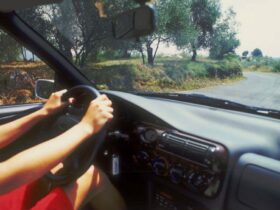
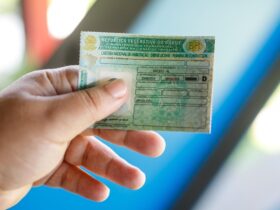


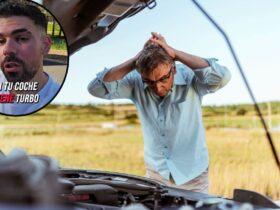
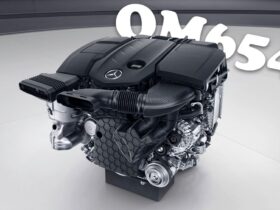

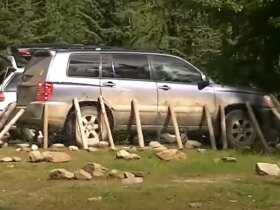

Got a Questions?
Find us on Socials or Contact us and we’ll get back to you as soon as possible.